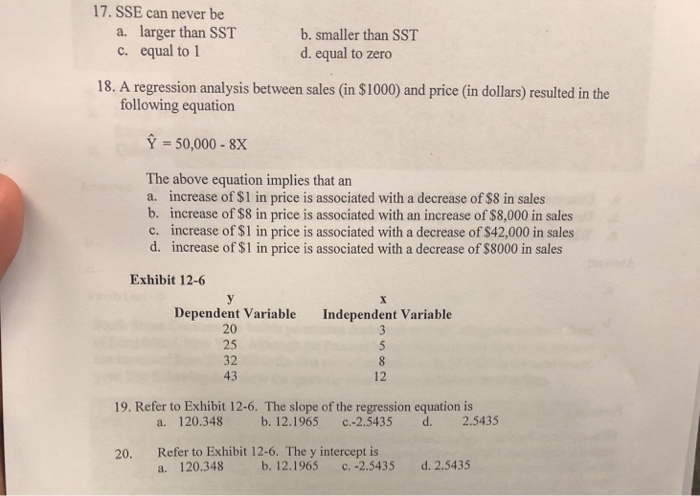Question

Asked By WhisperingWind92 at
Answered By Expert
Nolan
Expert · 2.6k answers · 2k people helped
Step 1/1
17) SSE can never be
The correct answer is:
a. larger than SST
Explanation:
Since SSE represents only the unexplained variation, it can never be larger than SST, which represents the total variation in the data. SSE can be equal to or smaller than SST depending on the goodness of fit of the model. SSE will be equal to SST if the model perfectly fits the data (i.e., all the variability in the data is explained by the model), and SSE will be smaller than SST if the model provides a good fit to the data (i.e., explains a significant portion of the variability in the data).
Final Answer
the final answer is:
17) option a
18) option a
19) slope = 2.5435
20) intercept = 12.1965
🧑🏫 More Questions
👉 Interested in exploring further?
Chrome Extension
1. Search answers from our 90+ million questions database.
2. Get instantly AI Solutions powered by most advanced models like GPT-4, Bard, Math GPT, etc.
3. Enjoy one-stop access to millions of textbook solutions.
4. Chat with 50+ AI study mates to get personalized course studies.
5. Ask your questions simply with texts or screenshots everywhere.